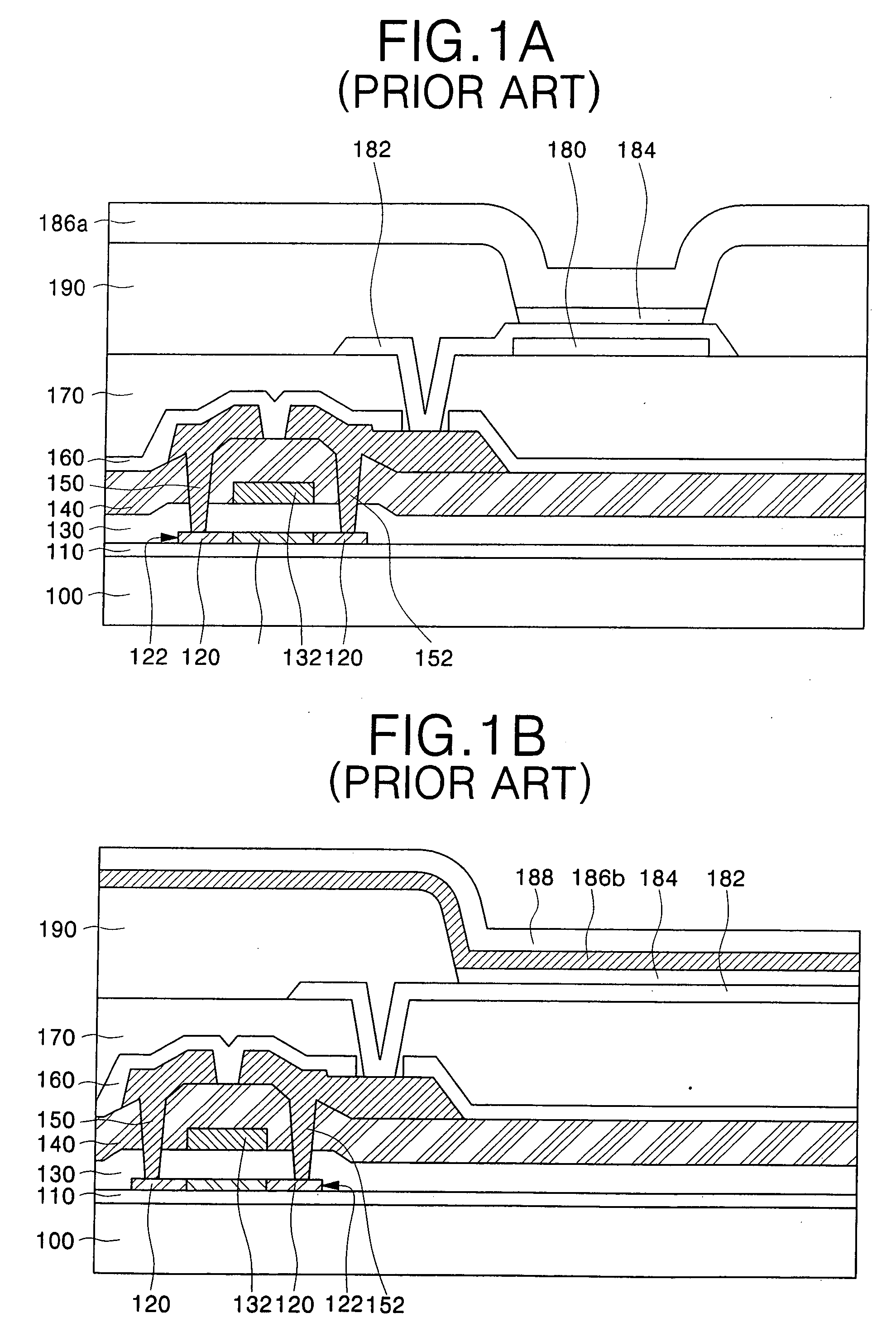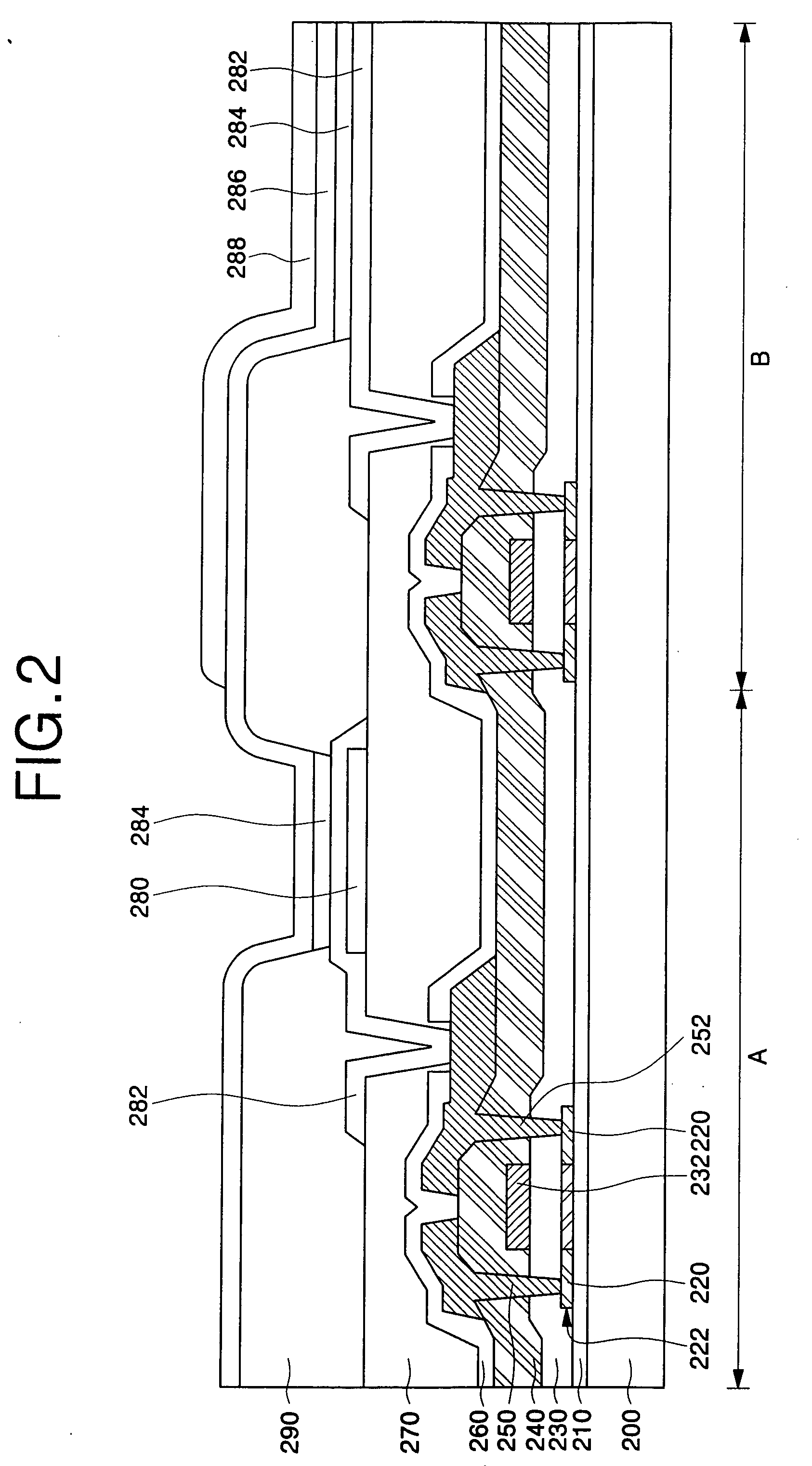Method of fabricating organic light emitting display
- Summary
- Abstract
- Description
- Claims
- Application Information
AI Technical Summary
Benefits of technology
Problems solved by technology
Method used
Image
Examples
Embodiment Construction
[0031] Reference will now be made in detail to the embodiments of the present invention, examples of which are illustrated in the accompanying drawings, wherein like reference numerals refer to the like elements throughout. The embodiments are described below in order to explain the present invention by referring to the figures.
[0032]FIG. 2 is a cross-sectional view of an OLED according to an embodiment of the invention. It is understood that the invention is not limited to the embodiment shown in FIG. 2. Referring to FIG. 2, the OLED of FIG. 2 includes a first region A and a second region B. The processes discussed below are simultaneously performed in the first and second regions A and B unless otherwise described. However, it is understood that the processes formed in the first and second regions A and B do not need to be performed simultaneously.
[0033] A buffer layer 210 having a predetermined thickness is provided or formed on a substrate 200 having a thin film transistor (TF...
PUM
 Login to View More
Login to View More Abstract
Description
Claims
Application Information
 Login to View More
Login to View More - R&D
- Intellectual Property
- Life Sciences
- Materials
- Tech Scout
- Unparalleled Data Quality
- Higher Quality Content
- 60% Fewer Hallucinations
Browse by: Latest US Patents, China's latest patents, Technical Efficacy Thesaurus, Application Domain, Technology Topic, Popular Technical Reports.
© 2025 PatSnap. All rights reserved.Legal|Privacy policy|Modern Slavery Act Transparency Statement|Sitemap|About US| Contact US: help@patsnap.com



